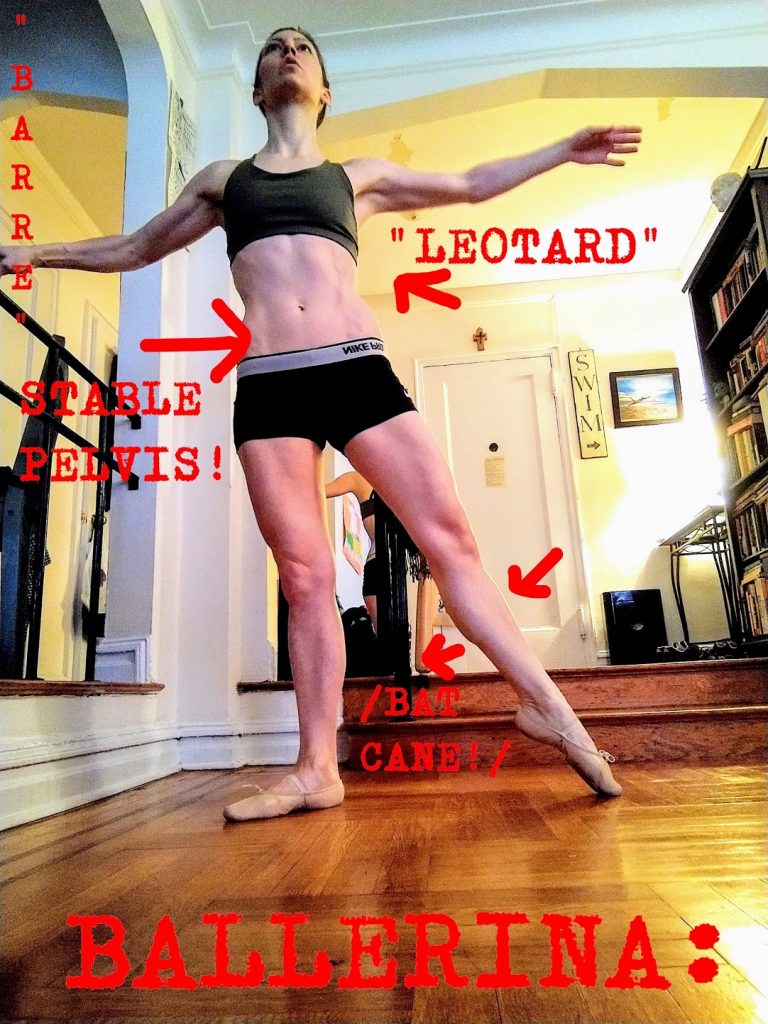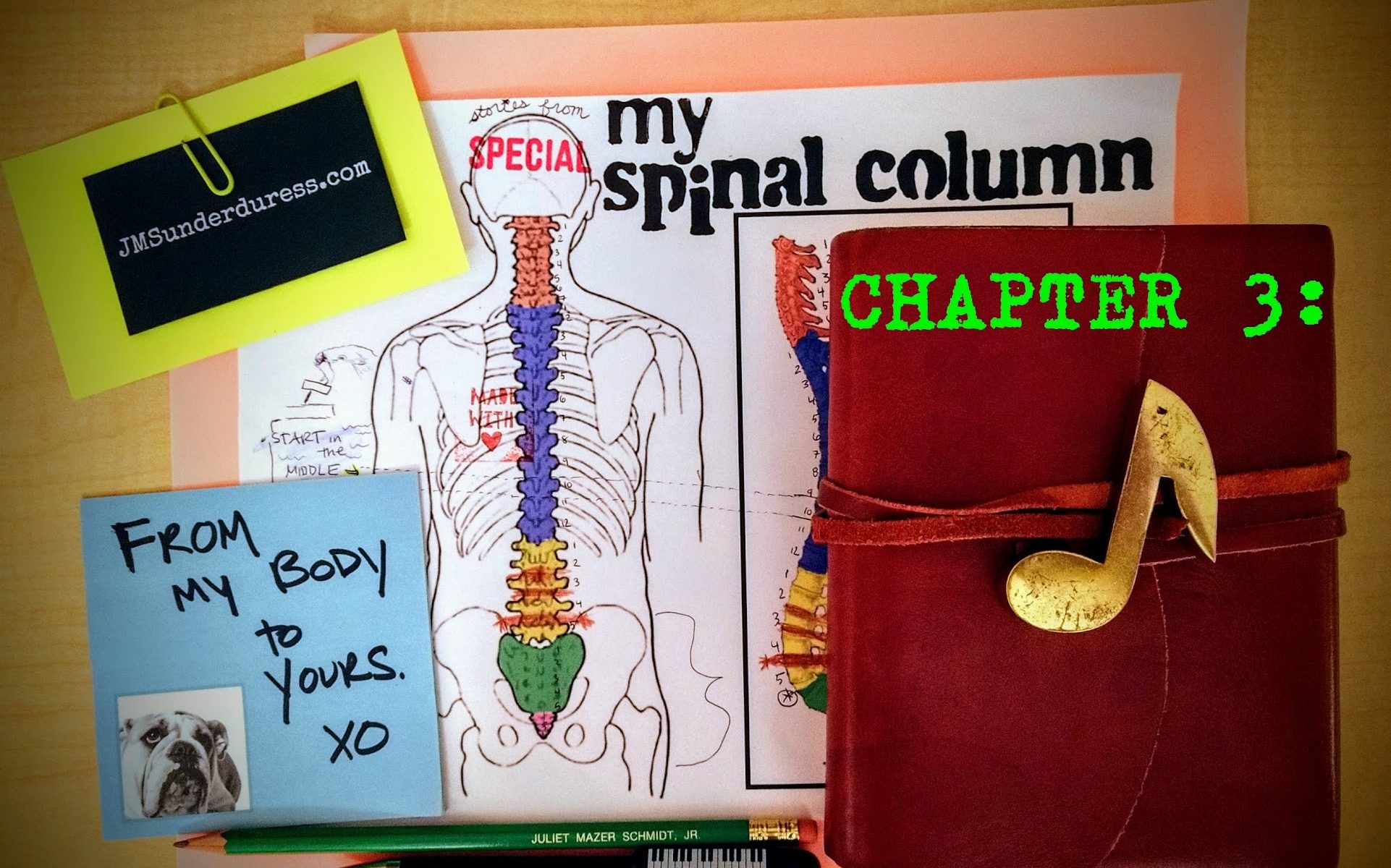MY SPINAL COLUMN is an ongoing series. To start at the very beginning (a very good place to start), click HERE.
Glowing light from the left lets me know it’s time.
I’ve long aspired to awaken in silence, synchronized to sunrise – succeeding, finally, when that “sun” is a ring of gradually brightening bulbs affixed to an otherwise silent alarm clock sited bedside, its “rise” scheduled on the other side of noon.
Afternoons in our household recast as “mornings,” my partner and I have slipped into a schedule on semi-Tokyo time, to watch sumo basho (15-day, bimonthly tournaments) live. Amidst the present pandemic, no one paying us to be anywhere during Manhattan’s technical morning (also the hours when our living room succumbs to summer heat), we’ve leaned into our write-by-night preferences and sumo fandom. Bedtime now 5AM, 6PM in Toyko, I’ve come to place my faith in each preview of “tomorrow”: proof that at least some of the world remains, maintaining some semblance of order – even if the consistency centers on combat.
With the sparrows’ daybreak set long complete, it is a choir of unseen pigeons that coos me toward consciousness, cutting through the constant hum of a small fan near my head. With eyes still closed, I collect three Opening Data Points: First, fingertips to iliac crests, I trace invisible lines across my lower abdomen to check the placement of my pelvis – often rotated in the aftermath of whatever fight choreography I’ve performed in my sleep.
(Sidebar)
Discovery of loose sacroiliac (“SI”) joints (connecting sacrum to pelvis) further twisted my body’s storyline senior year of high school: seasons spent swimming, pole vaulting, and performing gymnastics on a balance beam – atop the previous decade-plus of dance – loosened my SI ligaments past the point of no return, making my center of gravity precariously pliable, my sciatic nerve now prone to painful tantrums. (A resulting round of PT led to my first marriage proposal – when I proposed, deliriously – and only half-jokingly, to my physical therapist in the wake of a particularly successful 7AM session.)
Already down a knee, both shoulders, hips, and several toes, coming to learn that my pelvis, too, was unstable felt like someone’s dark take on a nursery rhyme: one by one, ambitious members from my merry band of joints seemed determined to “go solo” – an impossibility that never seemed to deter them from trying. I heard menacing music in these new pops and clicks, aware that an internal unraveling had begun – one I would disregard and underplay as long as I could – which, as it would happen, turned out to be another two decades.
(End of Sidebar.)
Second Data Point: wiggle toes, roll ankles, bend and straighten knees. My body a radio, legs serve as antennae that tune to the local frequency of present pain levels, setlist shuffling “latest hits” (like arthritic knuckles and tight hamstrings) alongside spondylitic “classics.” The Third Data Point’s the toughest: prescribed by a subsequent physical therapist, I embark on a mental treasure hunt to unearth gratitude amidst the arsenal of aches, observing my ability to feel, to move – to control any of my motion. (Depending on the day, this can take a minute…)
An optical crescendo set for 12:34 leaves 26 minutes to get from bed to barre.
This section of the routine goes: (1) brush teeth; (2) scrape tongue; (3) use toilet; (4) drink a full glass of water (hydration a key helper in handling persistent pain); (5) refill ice trays; (6) empty dishrack; (7) fill oil diffuser (peppermint oil’s another ally); (8) water plants; (9) turn on the robot that lives atop my desk and request a weather report, while (10) marking an “X” through yesterday’s number on the calendar in black Sharpie. (11) Take out recycling; (12) arrange three fans and two mirrors to align with the position I will soon occupy; (13) pin up hair; (14) wash face; (15) insert contacts; (16, evict new chin hairs); (17) suit up into a clean sports bra and spandex shorts, grab a pair of pale pink nylon “no show” socks; (18) take a few sips of Soylent; (19) unplug phone from its charger and place on pre-blocked music stand; (20) head to the “barre” – where ballet slippers and a pre-dated notebook page await.
Coming off my body’s 2019 Sciatic “A-Train, Bat Cane” Tour, I savor every step in this sequence, every consecutive day I accomplish all 20 of these Action Items – in about 20 minutes – unassisted.
I use the remaining minutes before ballet class to roll my shoulders, rotate my hips, re-align my pelvis as-needed (thanks to yet another physical therapist, I’ve learned to complete this feat in-home!). Finally, I perform “Shiko”: a central training exercise in sumo, rikishi stomp between two and four hundred times at the top of each morning’s training session to work legs and hips – also, according to Shinto tradition, to trample evil spirits beneath the ground. Open to all the help I can get (dealing with pelvic stability and evil spirits), I manage about a dozen slow cycles before Tiler cues pliés from Instagram Live.
Growing up, I had struggled to “see” myself as a ballerina: mirrors reflected legs that were too short (for a true arabesque), torso too long (for leotards), hips and shoulders too wide, booty far too big (for proper turnout). Costume fittings led to humiliation, my girth sometimes off the size chart; measurements taken in public became mini-traumas, Dance Moms in disbelief over my inconvenient stats. Come middle school, my ballet uniforms informed me I was Large, Extra-Large, too large – disqualified altogether from certain cuts of fabric.
I’m convinced invisible seeds of body dysmorphia live just beyond the borderlines of every size chart, planting themselves deep in the mind of a young girl the moment she learns she’s “too big” (or too small, I imagine) for the space she’s been asked to fill – even when that space is simply a leotard. Given that I spent so much of my time in spaces where I didn’t seem to “fit,” these toxic thoughts followed me far beyond the walls of a ballet studio, lasting long after I left my dance company; they live with me still, though I’ve become much better about ignoring them.
My most significant body dysmorphia breakthrough to-date? Sumo.
Hear me out.
I encountered Japan’s (top) Makuuchi Division sumo first via laptop screen, stationed atop the toaster oven in a tiny Lincoln Park apartment my partner and I shared briefly, during a transitional chapter sandwiched between his two moves to New York, (preceding my first). Both working in theater, he worked nights a mile south, I worked days a few blocks west, the apartment offered a convenient midway point that enabled each of us to commute safely on foot to our respective “offices.”
We overlapped, on occasion, for meals: my great-grandmother’s cherry wood table tucked between the stove and a space we repurposed as recording studio, our first “dining room” was, technically, a doorway. ‘Twas a taxing game of Tetris we played (and won), to fit multiple keyboards, guitars, desks, an assortment of physical therapy equipment – still leaving space enough to twirl, if tightly. We’d forfeited all three of our previously owned couches, soon thereafter discovering the utility of a Thai-cushion triangle lounger that helped to host post-show jams, multiple overnight guests, a commendably cozy Thanksgiving – even a legendary week-and-a-half of World Series gatherings, leading to the 2016 Cubs win.
In such snug quarters, all frequencies present are fated to harmonize: as a result, my partner’s pre-work basho viewing introduced small doses of sumo technique to my dancer-trained brain. To my eye, sumo was far from love at first tachiai: I’m ashamed to admit it took time for me to see beyond the cellulite in slow motion replays. My mind busy with other subjects – and aware of the misogyny entrenched in sumo culture, I was initially reluctant to give the sport my full focus.
Perhaps because I’d begun to tune it out, I began to glimpse something more in the rikishis’ fighting: with hair pulled back into a chonmage (like a bun!), colorful silk mawashi placed round the hips (like a tutu!), pre-match Shiko performed with extension and balance better than I ever had, I started to see them as…dancers?
With no weight classes, wrestlers in Japan’s top divisions vary in shape by nearly three hundred pounds and nearly a foot in height – a stark diversity in body type (and training background!) that takes the concept of a “pas de deux” to some truly thrilling places. Round a raised 4.55m clay ring lined by bales of rice and straw, I watched rikishis spin: perfectly centered, sometimes one-legged; able to shift weight swiftly, backbend into deep port de bras, land in full center splits!?
I was thunderstruck. Based solely on my own life’s experiences, I didn’t know bodies that big could move so gracefully. What hit me hardest: while commentators discussed and analyzed the size and shape of each rikishi, in the context of fighting styles and matchups, no body was “shamed” for its appearance.
Like a lot of serious ballerinas, aspiring rikishi often leave home young and impressionable, moving into heyas (stables) where they train rigorously to develop fundamental techniques carried forward throughout a professional career. But as growing bodies mature into their fullest expression, where ballet nearly always aims for an identical corps, sumo instead heightens originalities of the individual. Oyakata (stablemasters) work with each rikishi to establish a personal “brand” of sumo, considering dimensions, propensities, strengths and weaknesses, exploring where each road leads – altering the course to accommodate aging and injury. (No matter the Swan Lake, Odile’s always gonna have those 32 fouettés en pointe, ballerina damages be damned.)
Sumo evolved into an unlikely source for my own strength and self-confidence, causing me to celebrate every unique curve I have, in lieu of striving for – what ultimately comes down to – different bones.
On the other side of my final Chicago winter, shortly after my partner returned to New York, I resumed rehearsals with my (Chicago) dance company – learning my costume in that season’s speakeasy-themed show would involve a (leotard-resembling) bathing suit. The size chart proved to be as cruel as those still stored in middle school memories, body dysmorphia demons at the ready for a reunion. Tiny apartment all to myself, I dropped the leaves on my great-grandmother’s table, pushed aside the Thai lounger, rolled the rug, channeled my inner-rikishi…and stomped.
Shiko may not solve all problems, may not slay all the demons; more days will come when I fail to complete even a single shaky set. But for today, my hips have found a provisional peace – and it’s already tomorrow in Tokyo.

TURN TO CHAPTER 4: CATERPILLAR
More JMSunderduress you may enjoy…
BOW. REFLECT. GO AGAIN TOMORROW.
BETWEEN TWO BEAUTIFUL BOOKENDS
WHY I GAVE GETTIN’ THE BAND BACK TOGETHER A STANDING OVATION

